
Moth vs butterfly – what are the differences between these two well-known insect groups? Below you’ll find a complete guide to the difference between moths and butterflies, with pictures, interesting facts and examples…
Introduction
Moths and butterflies belong to the same order of insects, Lepidoptera, and often look similar to one another. (Interestingly, butterflies evolved from moths.)
Both moths and butterflies share the same four-stage life-cycle, undergoing complete metamorphosis as they progress from egg to winged adults. So why is Lepidoptera divided into moths and butterflies?
One of the best-known differences between moths and butterflies is that moths are nocturnal (active at night), whereas butterflies are diurnal (active during the day).
However, there are a number of exceptions to this rule, and on this page we give you a practical guide on how to tell the difference between these fascinating winged insects.
Page Index
- Moth Vs Butterfly: The Main Differences
- Difference Between Moth And Butterfly
- Color
- Antennae
- Wings
- Body
- Cocoon Vs Chrysalis
- Lepidoptera
- How Many Moths And Butterflies Are There?
- Moth And Butterfly Evolution
- Moths That Are Active During The Day
- Butterflies That Are Active During The Night
Discover more about insects on these pages:
- Insects – The Ultimate Guide
- Weird Insects – Pictures & Facts
- Are Insects Animals?
- Rainforest Insects Pictures & Facts

Below is a list of the main differences between moths and butterflies. Be aware that there are exceptions to these rules, which we cover further down the page.
Moth Vs Butterfly: How To Tell The Difference
- Nearly all butterflies are diurnal (active during the day), whereas most moths are nocturnal.
- Moths tend to have drab-colored wings, whereas those of butterflies are usually brightly-colored and more conspicuous.
- Moth antennae are feathery and often tapered or leaf shaped.
- Butterfly antennae are thin and hairless, and end with a ball or club.
- When at rest, moths either fold theirs wings back flat over their bodies, or have their wings open and touching the surface upon which they are resting.
- Butterflies usually rest with their wings held together behind their bodies, or bask with their wings held open, but not touching the surface upon which they are resting.
- During the pupal stage, moths make cocoons out of silk, whereas most butterflies form a chrysalis with a hard outer skin.
- The fore and hind wings of moths are joined by a row of hair-like structures known as frenulum, which most butterflies lack.
Difference Between Moth And Butterfly In Detail
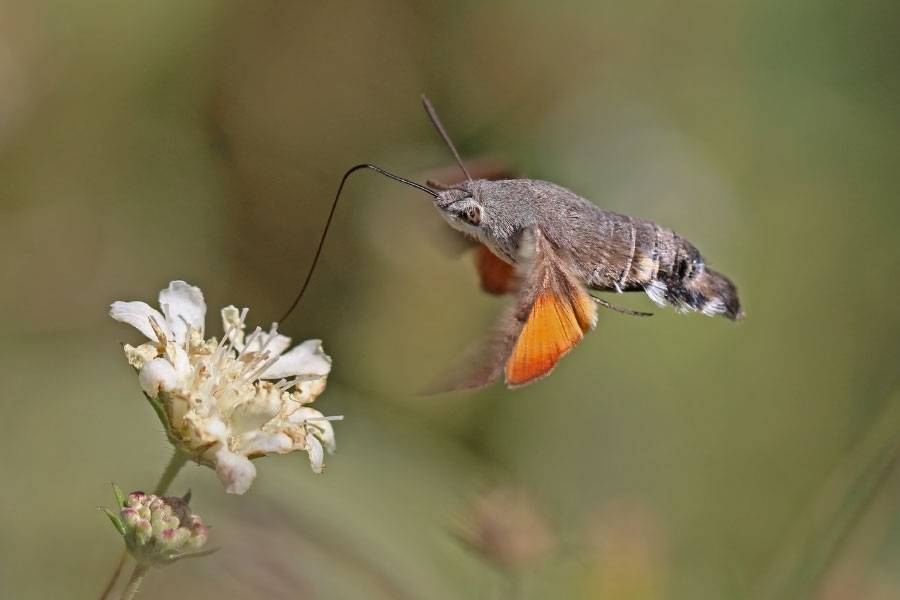
As we’ve found, the main behavioral difference between moths and butterflies is that most moths are either nocturnal or crepuscular (active at dawn and dusk), and nearly all butterflies are diurnal (active during the day).
There are exceptions; several moth species are active during the daytime, and a handful of butterflies are active at night (we’ve provided a list of examples of both further down the page).
The figures bear this out: there are around nine moth species for every one butterfly species, and scientists have calculated that between 75% and 85% of Lepidopteran species are nocturnal (source).
So, while night-flying or day-flying behavior gives a good indication of whether an insect is a moth or a butterfly, it is not conclusive; some moths are diurnal, and some butterflies nocturnal.
For accurate identification, we need to take a look at the key differences between moth and butterfly bodies…
Moth Vs Butterfly Wing Color
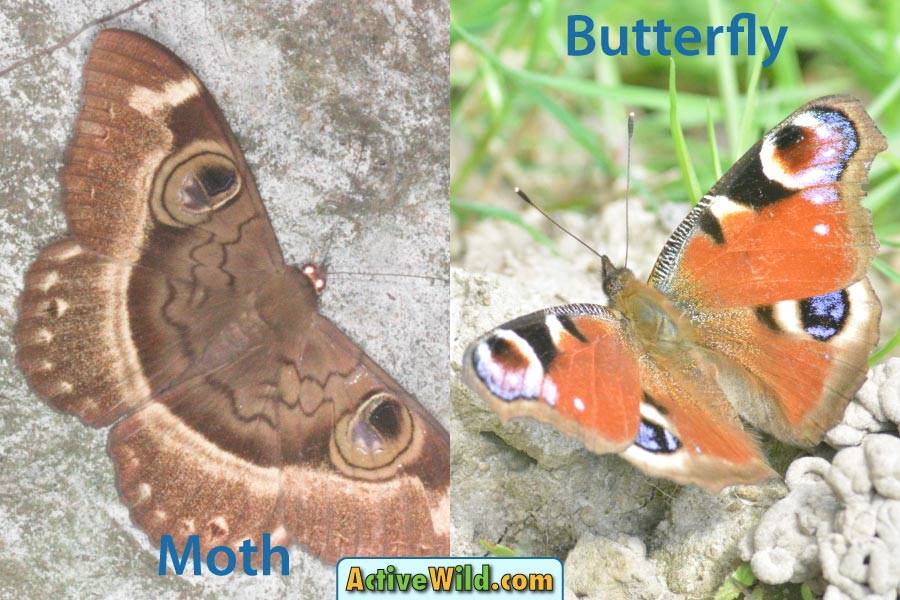
In general, moths tend to have drab-colored wings, whereas butterflies often have colorful patterns.
This is an adaptation for the insects’ respective lifestyles; a moth needs to be camouflaged during the day, when it is inactive, and being brightly-colored is not a requirement for a nocturnal animal. (Whereas butterflies use bright colors to locate mates, moths are more reliant on pheromones.)
Interestingly, moths that are active during the day tend to have brightly-colored wings.
Butterflies have brightly-colored wings for mate attraction and / or to send a warning signal to potential predators.
Why Are Butterflies Brightly Colored?
- Mate attraction: Bright colors can also play a role in mate selection, as they may signal good health and genetic fitness. Males with vibrant colors are often more attractive to females, increasing their chances of successful mating and passing on their genes.
- Warning signals: Some butterflies have bright colors as a form of aposematism, which serves as a warning signal to potential predators. These colors often indicate that the butterfly is toxic or unpalatable, discouraging predators from attempting to eat them.
In many species, there is a marked difference in the appearance of males and females. An example of this can be seen in the world’s largest butterfly: the Queen Alexandra’s birdwing (Ornithoptera alexandrae).
The male of this species is considerably more colorful than the comparatively drab, but significantly larger female, whose wingspan can reach 28 centimeters (9.8 inches to 11 inches).
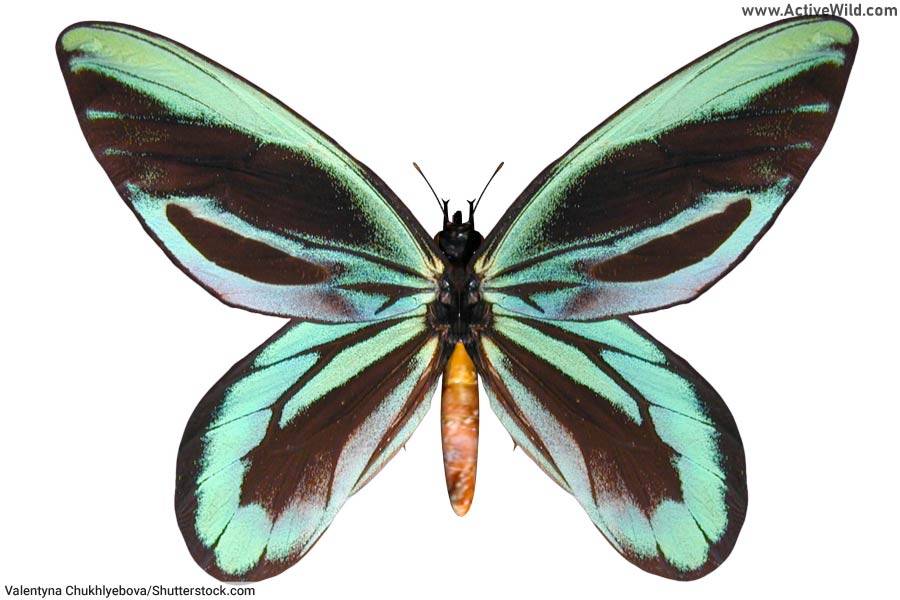
Antennae
The antennae of a moth are typically feathery and pointed, whereas those of a butterfly are typically thin and end with a ball or club.
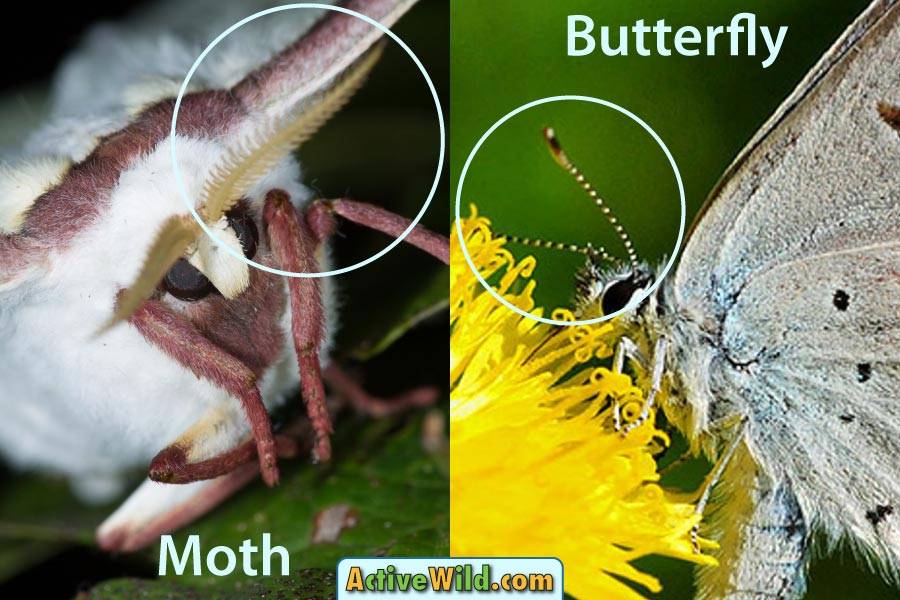
Wings
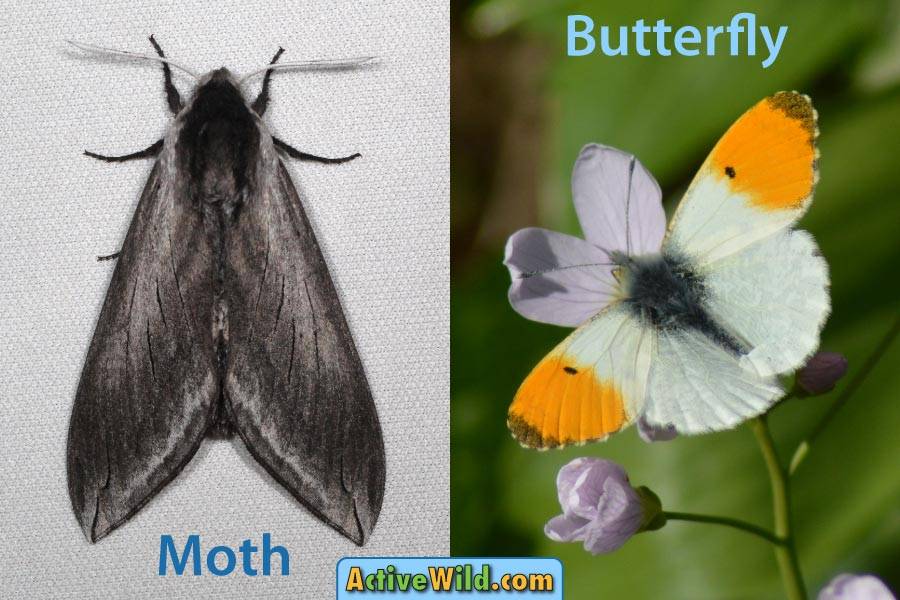
The way in which moths and butterflies hold their wings when at rest can also be used to tell the difference between butterflies and moths.
- At rest, moths tend to flatten themselves against the surface, either with the wings folded back against the moth’s body, or open and touching the surface upon which the insect is resting.
- Butterflies tend either to hold their wings either straight back, or bask with their wings held wide open (with space between each wing and the surface upon which the butterfly is resting).
Exceptions to the above include skippers (butterflies of family Hesperiidae). These butterflies often hold their wings folded behind them like a moth.
Frenulum
The fore and hind wings of moths are joined by a row of hair-like structures known as a frenulum, which is missing in most butterflies.
Body
A moth’s body is often thick and hairy – the hairs possibly being an adaptation to evade the echolocation of bats. By comparison, butterflies’ bodies tend to be thinner and smoother.
Cocoon Vs Chrysalis
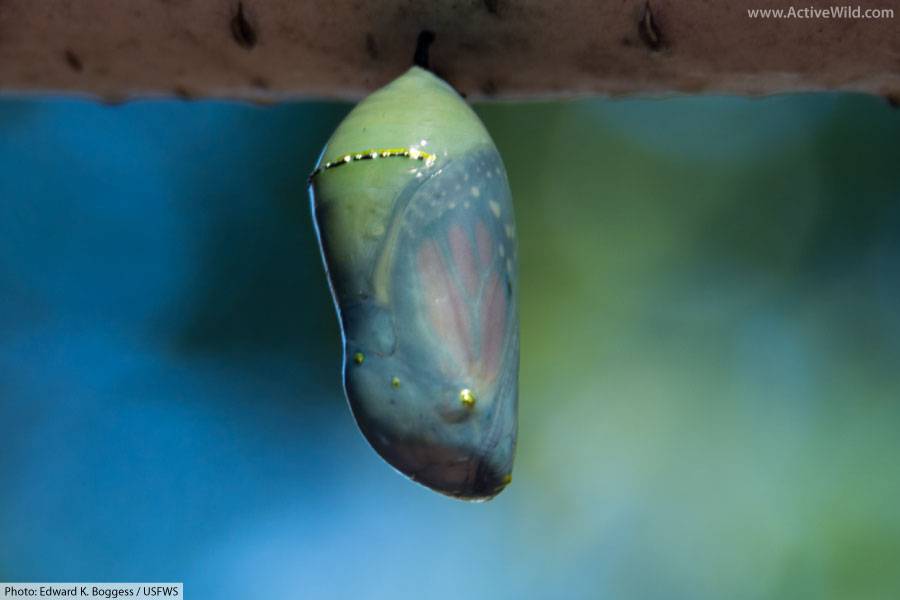
During their pupal stage, moths make cocoons out of silk in which they metamorphose from caterpillars into adult moths.
Most butterflies form chrysalises, which have hard outer skins, as they undergo the transformation from caterpillar to butterfly.
A cocoon and a chrysalis are both protective coverings that the insects use during the pupal stage of their development, but they differ in their structure.
A cocoon is a silk casing spun by moth caterpillars (and certain other insects) during the pupal stage of their life cycle. The cocoon acts as a protective barrier against predators and harsh environmental conditions. The caterpillar secretes silk threads from its spinneret glands, which it uses to create a woven structure around itself.
A chrysalis, on the other hand, is the hardened outer skin formed by butterfly caterpillars during their pupation. Unlike cocoons, chrysalises do not involve the use of silk. Instead, the caterpillar’s exoskeleton transforms into a rigid case as it prepares to undergo metamorphosis. This hardened shell serves as a protective layer for the developing butterfly inside.
As usual, there are exceptions: hawk moths, for example, pupate in an exposed pupa rather than a silken cocoon.
Lepidoptera
To fully understand the difference between moth and butterfly we need to delve a little deeper into the evolution of both groups of insect.
Surprisingly, moths first appeared many millions of years before butterflies, and butterflies subsequently evolved from moths.
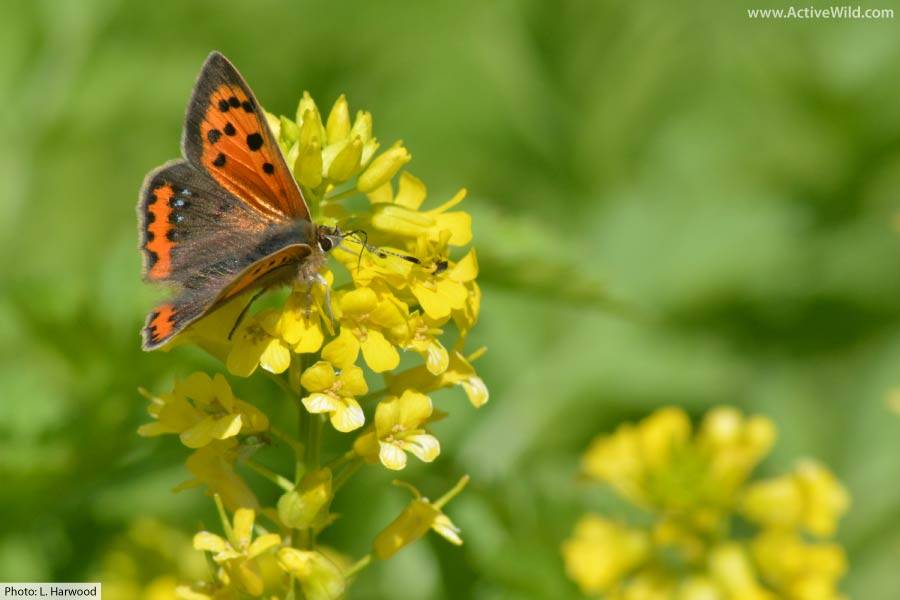
Moths and butterflies make up the order Lepidoptera. (An order is a group of related animals. You can find out more about how animals are grouped on this page: Animal Classification.)
Lepidoptera means ‘scale wing’. The name refers to the many tiny scales which cover both the wings and the bodies of butterflies and moths.
Other insect orders include Diptera (flies), Hymenoptera (bees, wasps and ants) and Coleoptera (beetles).
Like all insects, the bodies of moths and butterflies are divided into three segments: head, thorax and abdomen. All members of Lepidoptera go through a four-stage life-cycle, which consists of: egg, larva (caterpillar), pupa (chrysalis) and imago (the adult moth or butterfly).
Butterflies make up their own group, Papilionoidea, within Lepidoptera*. Papilionoidea is a ‘superfamily’ that contains several butterfly families, including Papilionidae (swallowtails and birdwings) and Nymphalidae (the brush-footed butterflies).
* There is some debate over whether or not the moth-like Hedyloidea should be included within Papilionoidea.
How Many Moths and Butterflies Are There?
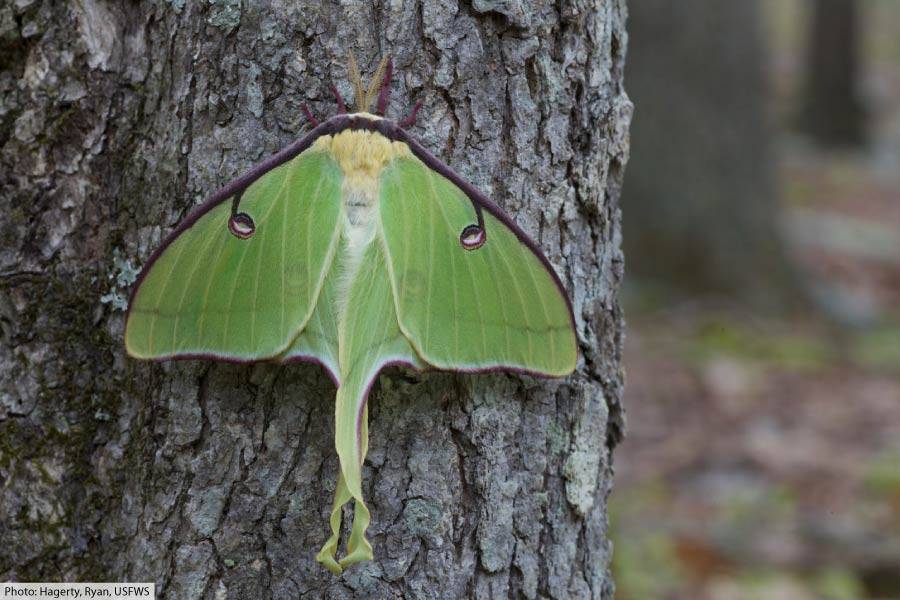
There are around 180,000 known species* in Lepidoptera. Only around 10% of these are butterflies; the remaining 90% are moths.
Most of the world’s moths and butterflies are found in tropical regions, although lepidopterans are present on every continent except Antarctica.
* The Catalogue of Life currently (April 2023) lists 159,657 living species (source), the 1999 edition of the Handbuch der Zoologie (a renowned reference work) lists 174,250 species (source).
Together, butterflies and moths make up around 1% of all known organisms.
Moth and Butterfly Evolution
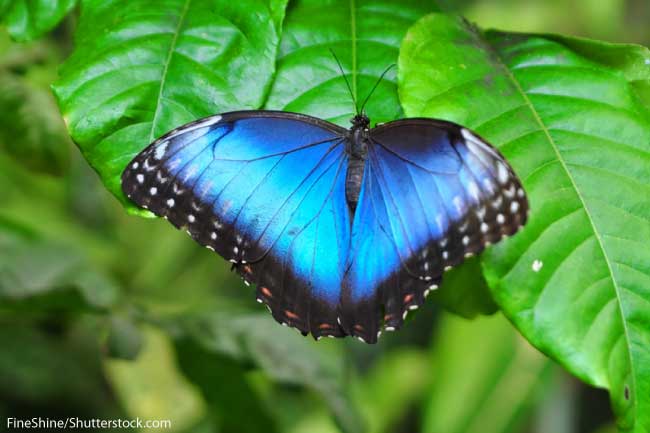
Whereas moths have been around since the dinosaurs, butterflies are relative newcomers, only having appeared in the last 55 million years.
Moths appeared many millions of years before butterflies. The very first moths appeared during the Jurassic Period. These early lepidopterans would have co-existed with dinosaurs.
- You can find out more about the Jurassic Period on this page: The Ultimate Guide to the Jurassic Period
The earliest known moth is Archaeolepis mane. A fossilized specimen has been dated to the Early Jurassic Period, around 190 million years ago.
During the Cretaceous Period the first flowering plants began to appear. The Lepidoptera and flowering plants coevolved, forming a relationship which was mutually beneficial.
- You can find out more about the Cretaceous Period on this page: The Ultimate Guide to the Cretaceous Period
The insects helped the plants to reproduce by transferring pollen, while the plants provided the insects with food in the form of nectar.
During the Cretaceous Period proboscises began to appear in adult lepidopterans. A proboscis is a curled, tongue-like mouthpart used by moths and butterflies to extract nectar from flowers. It is a feature of most modern butterflies and moths.
The first butterflies appeared around 55 million years ago, around 10 million years after the (non-avian) dinosaurs became extinct.
(The earliest-known American butterfly is Prodryas Persephone, whose fossilized remains have been dated to 34 million years ago.)
Butterflies evolved from moths. Because several different groups of moths had already appeared before butterflies, some moths are more closely related to butterflies than they are to moths in other groups.
Moths That Are Active During The Day
- Hummingbird Hawk-Moth (Macroglossum stellatarum) – Found in Europe, Asia and parts of Africa, hummingbird hawk moths are known for their hummingbird-like hovering behavior while feeding on nectar from flowers.
- Cinnabar Moth (Tyria jacobaeae) – Recognizable by its striking red and black markings, this moth is often found in grasslands and meadows. It is native to Eurasia, but has been introduced to Australia and North America.
- Six-Spot Burnet (Zygaena filipendulae) – A European day-flying moth with vibrant blue-green wings and six red spots, typically found in grassy habitats.
- White-lined Sphinx Moth (Hyles lineata) – Known for their large size and fast flight, these moths are often mistaken for hummingbirds. These day-flying moths are found from Central America through Mexico and most of the United States.
- Clearwing Moths (Sesiidae family) – These day-flying moths have transparent wings and slender bodies, and can be easily mistaken for wasps or bees.
Butterflies That Are Active During The Night
- Northern Pearly Eye (Enodia anthedon) – Found in North America, this butterfly is active during dusk and dawn and sometimes at night.
- Common Glider (Neptis sappho) – Active during twilight and early night, they are typically found in Europe and Asia.
- Chocolate Demon (Ancistroides nigrita) – This nocturnal butterfly is native to Southeast Asia and can be found in forested areas.
- Malayan Night Fliers (Elymnias caudata) – Found in Southeast Asia, these butterflies are active during dusk and night and are known for their striking wing patterns.
Discover More with Active Wild
Discover more about insects on these pages:
- Insects – The Ultimate Guide
- Weird Insects – Pictures & Facts
- Are Insects Animals?
- Rainforest Insects Pictures & Facts
You can find out more about moths and butterflies on the following pages:
- Monarch Butterfly Life Cycle
- Queen Alexandra Birdwing Butterfly Facts (The world’s biggest butterfly)
- Blue Morpho Butterfly Facts
- Hummingbird Moth Facts
The post Moth Vs Butterfly: How To Tell The Difference, Pictures & Examples appeared first on Active Wild.